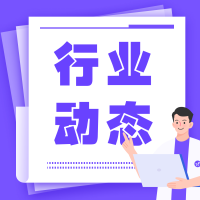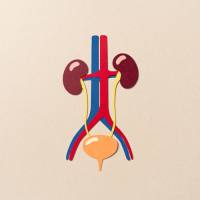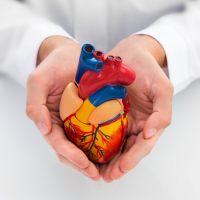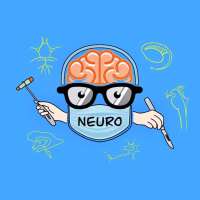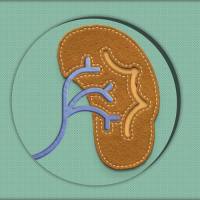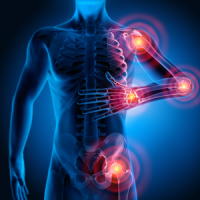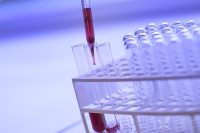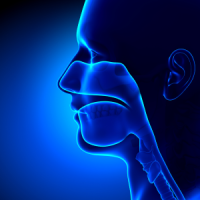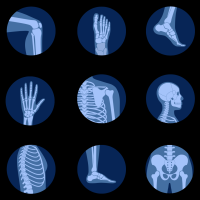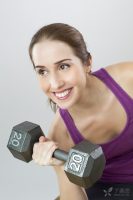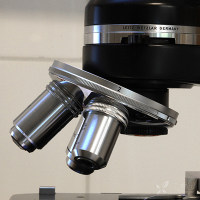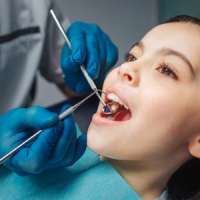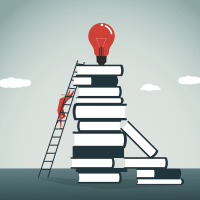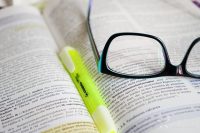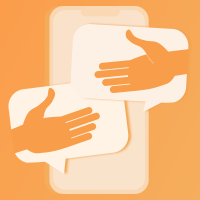视频:神经系统查体—颅神经(全)
最近找到一些神经系统查体视频的资源(终于学会视频上传,不容易啊),觉得内容不错,和大家分享,首先介绍颅神经检查部分:
1.嗅神经(CN I)
Can the patient smell coffee or soap with each nostril? Do not use noxious odors, since they may stimulate pain fibers from CN V. CN I is often not tested unless specific pathology such as a subfrontal brain tumor is suspected
患者可以每个鼻孔闻咖啡或肥皂吗?不要使用有毒的气味,因为它们可能会刺激来自CN V的疼痛纤维。CN I通常不会被测试,除非特定的病理学,例如额下脑瘤

2.视神经 (CN II)
(1)Examine both retinas carefully with an ophthalmoscope;
用眼底镜仔细检查视网膜;

(2)Visual Acuity. Test visual acuity for each eye separately (by covering one eye at a time) using an eye chart.
(2)视力。用眼图分别测试每只眼睛的视力(一次只覆盖一只眼睛)。
(3)Color Vision. Test each eye separately for ability to distinguish colors. Test for red desaturation, a sign of subtle asymmetry in optic nerve function seen, for example, in optic neuritis by asking the patient to cover each eye alternately while looking at a red object and report any relative dullness of the color in one eye.
(3)色觉。分别测试每只眼睛的颜色区分能力。测试红色饱和度下降,这是视神经功能微妙不对称的标志,例如在视神经炎中,要求患者在观察红色物体时交替遮住每只眼睛,并报告一只眼睛的颜色相对暗淡。

(4)Visual Fields. Test visual fields for each eye by asking the patient to fixate straight ahead and to report when a finger can be seen moving in each quadrant. Alternatively, ask the patient to report how many fingers are being shown in each quadrant. More precise mapping of visual fields can be done in the laboratory for patients who will be followed over time
(4)视野。测试每只眼睛的视野,要求病人直视前方,并报告每个象限内手指的移动情况。或者,要求患者报告在每个象限中显示的手指数量。对于随着时间的推移患者,可以在实验室进行更精确的视野测绘
(5)Visual Extinction. Test for visual extinction on double simultaneous stimulationby asking the patients how many fingers they see when fingers are presented to both sides at the same time. In visual extinction, a form of hemineglect , patients do not report seeing the fingers on the affected (usually left) side of the visual field, although they can see fingers when they are presented to that side alone.
(5)视觉对消。通过询问患者同时向两侧呈现手指时他们看到多少手指来测试双重同时刺激的视觉对消。在视觉对消中,患者不会在视野受影响的部位(通常是左侧)看到手指,尽管当他们单独出现时,他们可以看到手指。

(6)In comatose or uncooperative patients, visual fields can be tested roughly using blink-to-threat, in which the examiner's fingers are moved rapidly towards the patient's eyes from each quadrant to see if a blink occurs.
(6)在昏迷或不合作的患者中,可以使用眨眼对眼睛进行大致的视野检查,其中检查者的手指从每个象限快速移向患者的眼睛,以观察是否发生眨眼。

3.动眼神经、滑车神经核展神经 (CN III, IV, VI)
(1)smooth pursuit:by having the patient follow an object moved across their full range of horizontal and vertical eye movements.
(1)平滑追踪:通过让病人跟随一个物体在整个水平和垂直眼球运动范围内移动。
(2)convergence:by having the patient fixate on an object as it is moved slowly towards a point right between the patient's eyes. Also, observe the eyes at rest to see if there are any abnormalities such as spontaneous nystagmus or dysconjugate gaze (eyes not both fixated on the same point) resulting in diplopia (double vision).
(2)辐辏反射:通过使患者慢慢地移动到患者眼睛之间的一个点上,使患者注视对象。另外,观察静止时的眼睛,看是否有任何异常,如自发性眼球震颤或视力异常(眼睛不能同时固定在同一点)导致复视(复视)。

(3)optokinetic nystagmus (OKN) : moving a strip with parallel stripes on it in front of the patient's eyes and asking them to watch the stripes go by. Normally, rhythmic eye movements called nystagmus occur consisting of an alternating slow phase with slow pursuit movements in the direction of strip movement, and a rapid phase with quick refixations back to midline.
(3)视动性眼球震颤(OKN):在患者眼前用平行条移动一条条,并要求他们观看条纹。正常情况下,称为眼球震颤的节律性眼球运动发生在缓慢追逐运动的带状运动方向上的交替缓慢阶段,以及快速再现回到中线的快速阶段。

(4) vestibulo-ocular reflex : can be used to test whether brainstem eye movement pathways are intact. The oculocephalic reflex, a form of the vestibulo-ocular reflex, is tested by holding the eyes open and rotating the head from side to side or up and down. These maneuvers obviously should not be performed in cases of head injury or other cases of suspected cervical spine trauma unless complete cervical spine films are normal. The reflex is present if the eyes move in the opposite direction of the head movements, and it is therefore sometimes called doll's eyes. Note that in awake patients, doll's eyes are usually not present because voluntary eye movements mask the reflex. Thus, the absence of doll's eyes suggests brainstem dysfunction in the comatose patient but can be normal in the awake patient. Another, more potent stimulus of the vestibulo-ocular reflex used to evaluate comatose patients is caloric stimulation
4)前庭眼反射:可用于测试脑干眼球运动通路是否完整。眼前反射是前庭眼反射的一种形式,通过睁开眼睛并从一边到另一边或上下旋转头来测试。除非颈椎完全正常,否则在头部受伤或其他疑似颈椎损伤的情况下,这些操作显然不应该进行。如果眼睛向与头部运动相反的方向移动,则存在反射,因此有时称为玩偶的眼睛。请注意,在清醒的患者中,通常不会出现玩偶的眼睛,因为随意的眼球运动掩盖了反射。因此,没有娃娃的眼睛暗示了昏迷患者的脑干功能障碍,但在清醒的患者中可能是正常的。

4.三叉神经 (CN V)
(1)facial sensation:using a cotton wisp and a sharp object. Also test for tactile extinction using double simultaneous stimulation.
(1)面部感觉:使用棉缕和尖锐的物体。同时使用双重同时刺激测试触觉消光。

(2)corneal reflex:involves both CN V and CN VII, is tested by touching each cornea gently with a cotton wisp and observing any asymmetries in the blink response.
(2)角膜反射:涉及CN V和CN VII两者,通过用棉束轻轻接触每个角膜并观察眨眼响应中的任何不对称来进行测试。

(3)Feel the masseter muscles during jaw clench. Test for a jaw jerk reflex by gently tapping on the jaw with the mouth slightly open.
(3)在下颌咬紧时感觉咬肌。通过轻轻敲打嘴巴轻轻打开,测试下颌反射。


5.面神经 (CN VII)
(1)面部表情
Look for asymmetry in facial shape or in depth of furrows such as the nasolabial fold. Also look for asymmetries in spontaneous facial expressions and blinking. Ask patient to smile, puff out their cheeks, clench their eyes tight, wrinkle their brow, and so on. Old photographs of the patient can often aid your recognition of subtle changes
寻找面部形状的不对称或深度的皱纹,如鼻唇沟。同时寻找自发的面部表情和眨眼的不对称。要求病人微笑,吐出双颊,紧握双眼,皱眉,等等。病人的旧照片往往可以帮助你认识到微妙的变化。

(2)味觉
Check taste with sugar, salt, or lemon juice on cotton swabs applied to the lateral aspect of each side of the tongue. Like olfaction, taste is often tested only when specific pathology is suspected, such as in lesions of the facial nerve, or in lesions of the gustatory nucleus (nucleus solitarius).
用棉签上的糖,盐或柠檬汁检查味道,将其用于舌头两侧的侧面。就像嗅觉一样,只有在怀疑特定的病理时,例如面神经损伤,或者味觉核(孤束核)的损伤时,才会检测味觉。
6.位听神经(CN VIII)
(1)听力检查

(2)眩晕查体

7.舌咽神经、迷走神经(CN IX,X)
观察双侧软腭及咽反射
Does the palate elevate symmetrically when the patient says, "Aah"? Does the patient gag when the posterior pharynx is brushed? The gag reflex needs to be tested only in patients with suspected brainstem pathology, impaired consciousness, or impaired swallowing.
当病人说“啊”时,口感是否对称地升高?患者在咽后壁刷牙时是否会出现呕吐?只有在疑有脑干病理,意识障碍或吞咽障碍的患者中才需要检测吞咽反射。

8.发音异常时的查体(CN V, VII, IX, X, XII)
Is the patient's speech hoarse, slurred, quiet, breathy, nasal, low or high pitched, and so on? It is often important to ask if the patient's speech has changed from baseline. Note that dysarthria or abnormal pronunciation of speech, is not the same as aphasia, which is an abnormality in language production or comprehension.
观察患者声音是否沙哑?模糊?安静的?鼻音?低音还是高音等等?询问患者的言语是否已经从基线改变,这一点很重要。请注意,构音障言语的异常发音,与语言生成或理解中的异常失语不同。

9.副神经(CN XI)
检查乳突肌和斜方肌
Ask the patient to shrug their shoulders, turn their head in both directions, and raise their head from the bed, flexing forward against the force of your hands.
要求病人耸耸肩膀,双向转头,抬起头从床上向前弯曲,反抗手的力量。

10. 和舌下神经(CN XII)
检查舌肌
Note any atrophy or fasciculations (spontaneous quivering movements caused by firing of muscle motor units) of the tongue while it is resting on the floor of the mouth. Ask the patient to stick their tongue straight out and note whether it curves to one side or the other. Ask the patient to move their tongue from side to side and push it forcefully against the inside of each cheek.
注意舌头放在口底时的任何萎缩或束缚(由肌肉运动单位的发射引起的自然颤抖运动)。要求病人直接伸出舌头,注意是否弯曲到一侧或另一侧。要求病人左右移动他们的舌头,并强行将其推到每个脸颊的内侧。




